A Forecast for Learning & Earning in 2025–2026
What will learning and work look in the year ahead (and beyond)?
As we head back to school and back to the office, my colleague Jennifer Lee and I found ourselves asking: what will learning and work look in the year ahead (and beyond)?
It’s no secret that AI has unlocked a new axis of possibility in how we live, learn, work. Yet, the world is still grappling with what that promise means in practice. The horizon of possibility is vast, but we’ve tried to bring the future into focus.
With this Forecast for Learning and Earning in 2025-2026 report, we dive into:
Seven major thematic observations
What makes this moment an inflection point
Key predictions (and their precedent)
Short and long term projected impacts
For the full picture, you can download the full report here.
Throughout the fall, Jennifer and I will also be hosting weekly live sessions with experts to go deeper into each theme and tackle your most pressing questions. Sign up here to stay updated about session dates and recordings.
Below is a breakdown of a few of the big ideas we surfaced.
1. Fostering Trust in the Age of AI
Every breakthrough technology has had to climb the trust curve. Electricity had to prove it wouldn’t burn down homes, elevators needed emergency brakes to overcome fear of falling, cloud computing had to battle data privacy anxieties.
AI is no exception. Despite record breaking performance on benchmarks, people remain skeptical: hallucinations, biased data, and black boxes keep trust low. For enterprises and schools, the speed of adoption will hinge on whether systems can demonstrate reliability, predictability, and user control.
We’re already seeing early moves: human-in-the-loop guardrails in education, educator override systems, domain-specific evaluations. Over time, we predict entire professions may emerge around trust itself — “AI curation managers,” “Override designers,” “Predictability architects”.
2. AI is Air: Ambient AI in Every Breath, Step, and Swipe
We are entering the era of ambient AI, where it is embedded in every digital interaction. For most of modern education, data capture was episodic: quizzes, tests, essays. Ambient AI flips that by weaving together continuous multimodal inputs into persistent context.
This could creates “shadow profiles” that hyper-personalize learning pathways, but also raise urgent questions about consent and governance. For students, the line between school and life may blur. This could look like a VR game at home that feeds into teamwork assessments, or a part-time job performance feeding into a career skills profile.
Whoever builds the “Learning Operating System” — the backbone that stitches these experiences together — will hold extraordinary power. But transparency, opt-in controls, and equitable design will make or break public trust.
3. From Testing to Continued Intelligence
Peter Drucker’s maxim, “what gets measured gets managed”, has long guided education and work. But we mostly measure what is easy, not what matters. Standardized tests fail to capture skills like collaboration, resilience, or reasoning.
With ambient AI, assessment can becomes continuous. A classroom debate, a customer service call, or a lab presentation can all feed into dynamic profiles of skills and growth. Done right, this shift could measure real learning and impactful feedback. Done wrong, it risks turning schools and workplaces into surveillance states.
The long term outcome: skills become the substrate. Competency graphs will travel with learners from K-12 into careers, more predictive than a GPA or even a degree. Everyday artifacts of work become evidence of mastery.
4. Fallout from the Automation of Entry-Level Jobs
The career ladder has always relied on rungs: entry-level roles where young workers learned by repetition and supervision. Those rungs are now under threat. Analyst roles, junior reporters, research assistants — the kinds of jobs where you “learn by doing” — are also the ones AI is best at automating.
Anthropic’s Dario Amodei has warned that up to half of entry-level U.S. jobs could vanish in the next five years. The danger isn’t just unemployment, it’s the hollowing out of skill development. If the only exposure new workers get is polished AI outputs, there’s worry they’ll miss the trial-and-error that builds deep expertise.
In response to this, we could see the rise of AI-first apprenticeships — where workers learn by overseeing and refining AI systems, or even intentional friction reintroduced into workflows to ensure people still do the messy parts. Without this, we risk raising a generation skilled at managing AI, but not at solving problems when AI fails.
5. Growing Privatization of Education
School choice is no longer a fringe debate. In the U.S., over 1 million students now participate in Education Savings Accounts, vouchers, or tax-credit scholarships — double from just five years ago. Globally, demand for private schooling is rising, driven by middle-class growth and new models like AI-native microschools.
Technology is lowering barriers to entry. The result is a “landscape of experimentation” with premium, hybrid, and ultra-affordable options. But experimentation also brings confusion. Parents, taxpayers, and policymakers are struggling to evaluate which models work. We expect to see new regulations around accreditation, mandated testing, and accountability emerge in the years ahead.
6. Volatility as Education’s New Normal
The pandemic unleashed a flood of EdTech spending, much of it through emergency ESSER funds. But today, volatility rules. Federal freezes on billions in K-12 funding sent districts scrambling. Many are now consolidating bloated tech stacks and demanding clear proof of impact.
Procurement cycles have slowed dramatically. Teachers are being asked to integrate new AI tools while losing aides and services. Burnout is still nearly twice as high among teachers as other professions.
Over the long run, this volatility will likely drive:
Consolidation of vendors into integrated platforms
State-level procurement standards for AI tools
Equity concerns if services for vulnerable students are cut
Education leaders are navigating an environment where uncertainty itself is the constant.
7. The New SEL: Navigating Human–AI Relationships
Finally, AI is changing not just how we learn and work, but how we relate. Already, 33% of teens use AI companions for social interaction, and a third say those conversations are as satisfying as talking with friends.
This raises a new question: should SEL now include healthy human–AI relationships alongside human–human ones? As AI companions gain memory and agentic capabilities, they’ll feel increasingly personal, adaptive, and present. That can be validating, but it also risks dependency, delusion, or confusion.
Schools may need to treat AI relationship literacy the way we treat digital literacy or sex education: proactive and embedded into curricula. Relational intelligence could expand to include navigating both human and AI bonds.
Why This Matters
The next few years won’t just shape EdTech markets. They’ll redefine how people learn, earn, and connect.
And the signals are already here: from ambient AI reshaping classrooms, to skills replacing degrees as the currency of work, to students forming bonds with AI companions. The question is how we use these signals to design learning and workforce systems that are more trusted, more personalized, and more human.
Explore our forecasts, predictions, and projected impacts in the full report here.


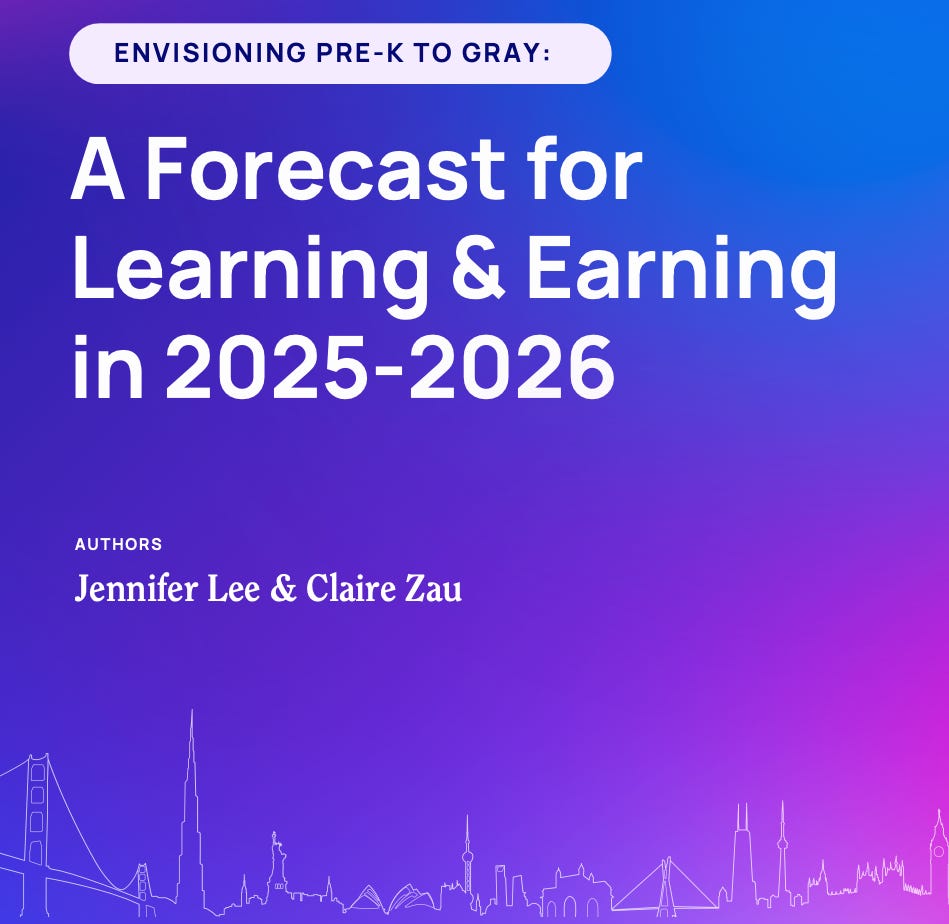
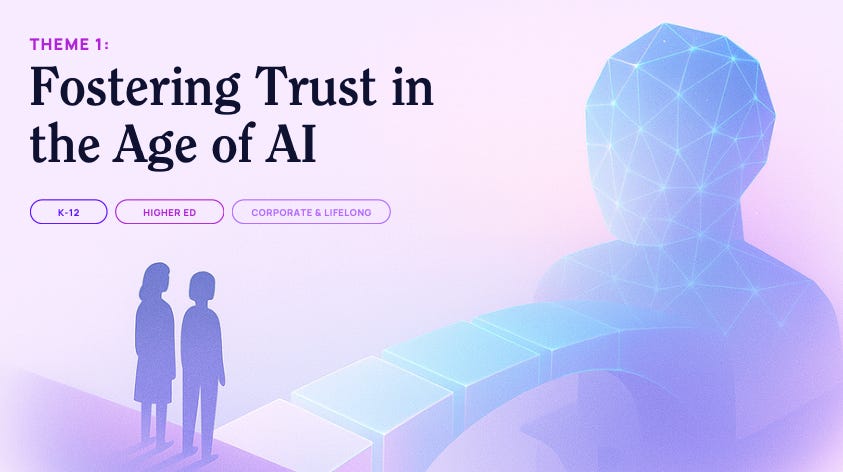
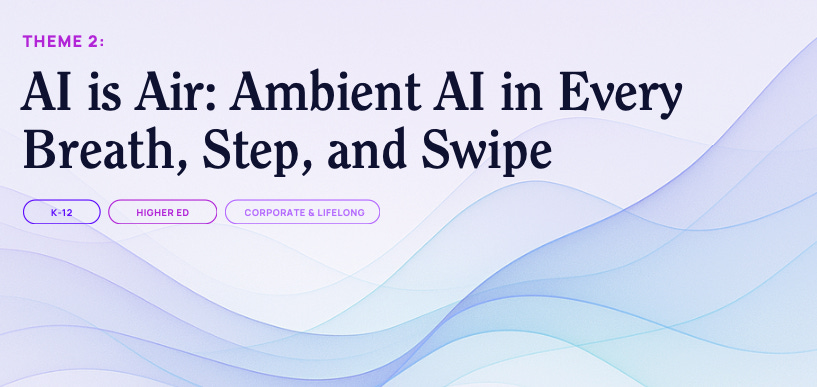
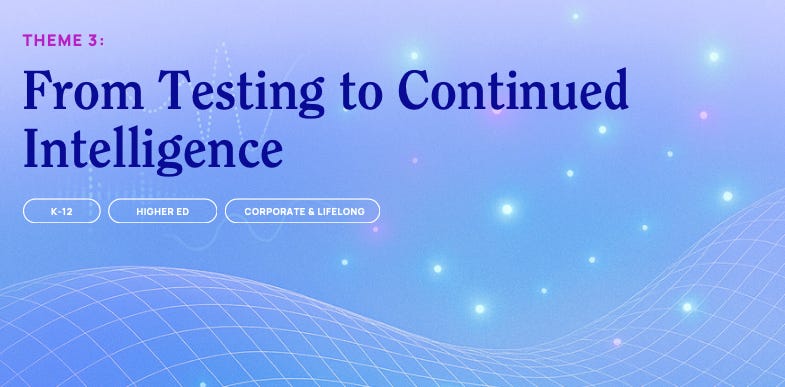
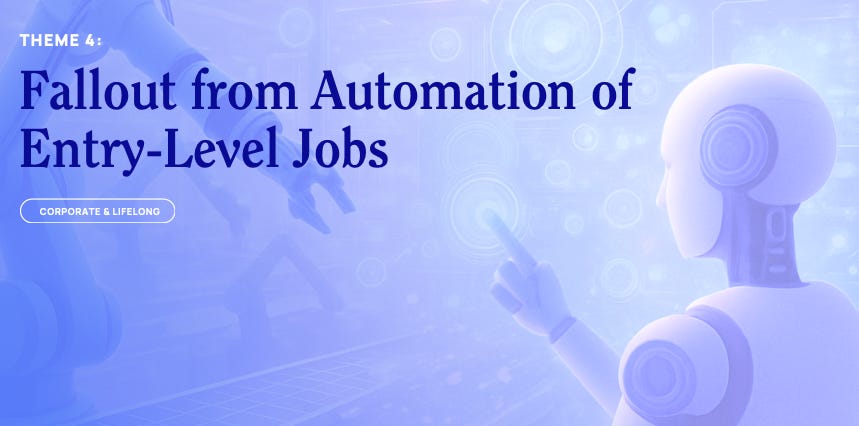
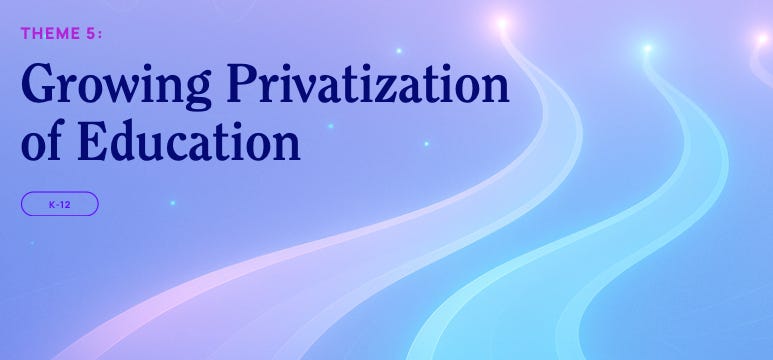
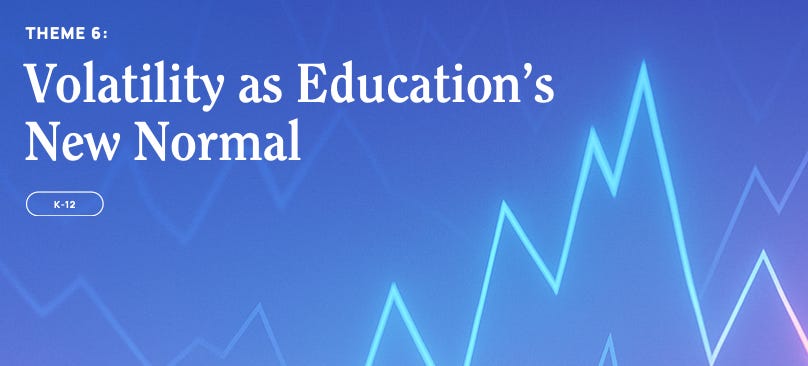
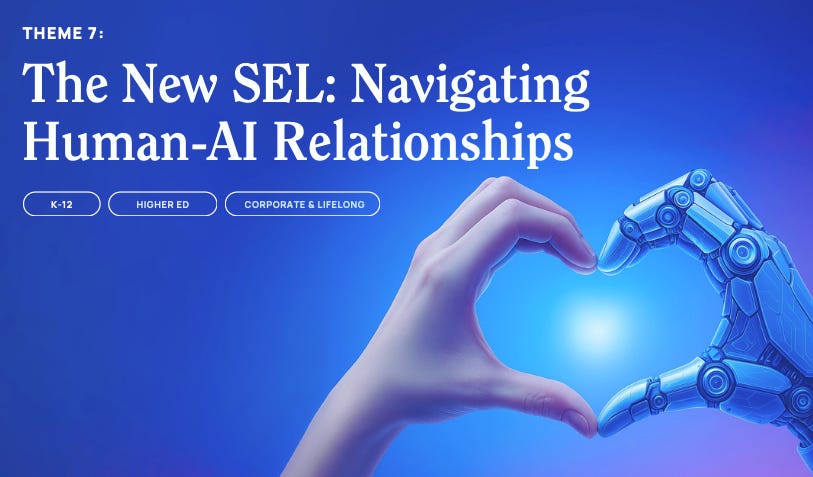
Excellent as always Claire